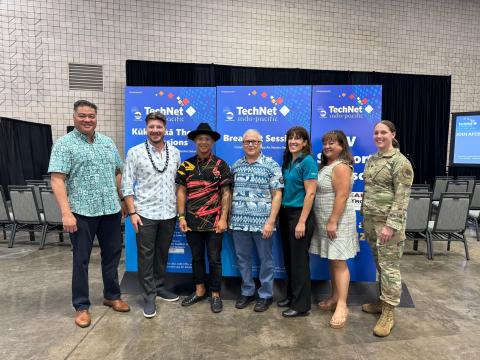IRS Jumps on the Innovation Bandwagon
The U.S. Internal Revenue Service (IRS) is taking innovation in-house as it strives to change the way it contracts with large and small businesses. The agency has instituted a number of programs that include actively seeking alternatives to contracting processes from companies seeking to do business with the revenue service.
Shanna Webbers, IRS chief procurement officer, described this new thrust toward innovation to a meeting of the AFCEA Small Business Committee in early June. She explained that the philosophy behind this effort is that change will not occur if the agency continues to do business the same way it always has. To boost the effort, it actively reaches out to companies both through trials of new contracting methods and by seeking their suggestions before innovations are explored.
Describing this effort as “a game-changing journey” the IRS has embarked on, Webbers said the agency created a new acquisition management and planning division, known as AMP. “We’re amping it up,” she quipped. This division serves as “a front door” for potential contractors in that they may come to the division for help in preparing their bids. The IRS will work as long as 36 months with the contractors on crafting their acquisition packages. The key is for them to understand what the customer wants, so the division helps write the package to aid in the process.
Another effort focuses on acquisition portfolio management. The IRS is trying to reduce 68 case management systems to a small number, Webbers allows. She admits that the agency’s data is “not great,” but she offers that it probably is similar to that of many other government agencies. In some cases, people cannot determine what a contract is about just by reading the title. So, the agency is working on technologies in procurement to digitize its records to shed more light on those contracts. Better understanding of contract offers will help companies build better networks of partners to work with, she points out.
Ultimately the font of acquisition innovation at the IRS may be the Procurement Innovation Branch. Webbers allows that the inspiration for this branch was the Department of Homeland Security’s Procurement Innovation Lab. However, that lab drew from people within the department, and the IRS lacks the number of personnel necessary for that approach. So, the agency relies heavily on input from outside sources such as businesses.
This effort includes trying different ways of procurement. The agency will try a method once, and then it will ask industry and contracting officials what worked well and what didn’t. Webbers says the IRS focuses on acknowledging effects versus lessons learned, and this approach allows it to do procurement differently. The agency will do several innovative procurements with different features until it finds “a sweet spot,” she says. Conversely, if an innovative approach doesn’t work, it is discarded.
Webbers emphasized that the IRS needs input from contractors—not only on what it has tried, but also what business wants it to try. The agency actively seeks suggestions for innovative approaches to procurements using this trial method.
“We want industry feedback on the kinds of things you want us to try,” she stated. “We can’t expect to do business as usual and get different results.”




Comments